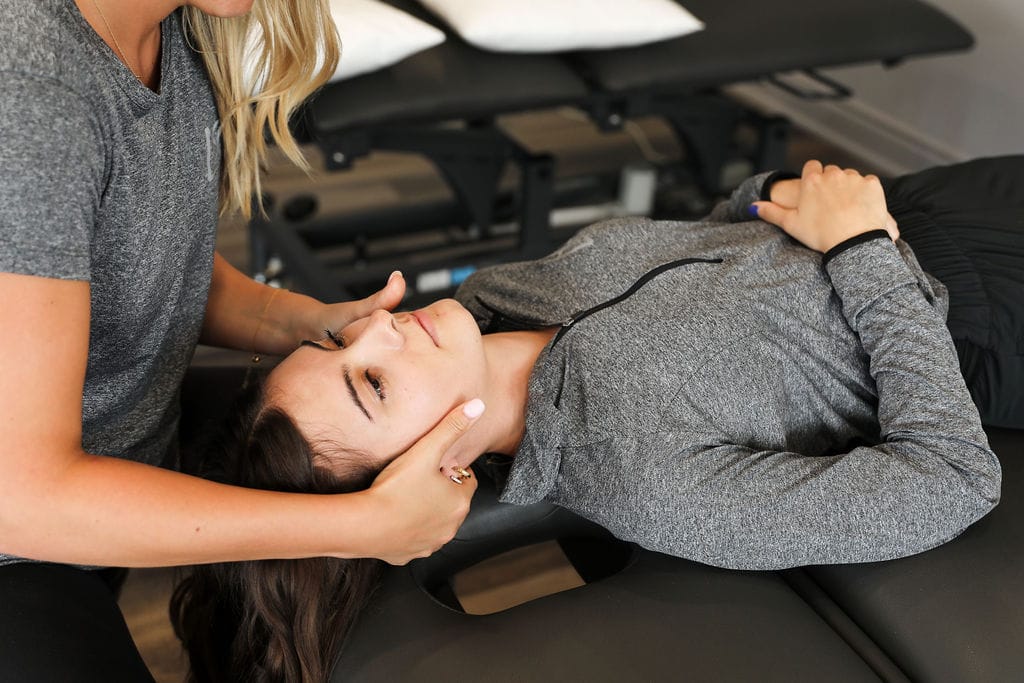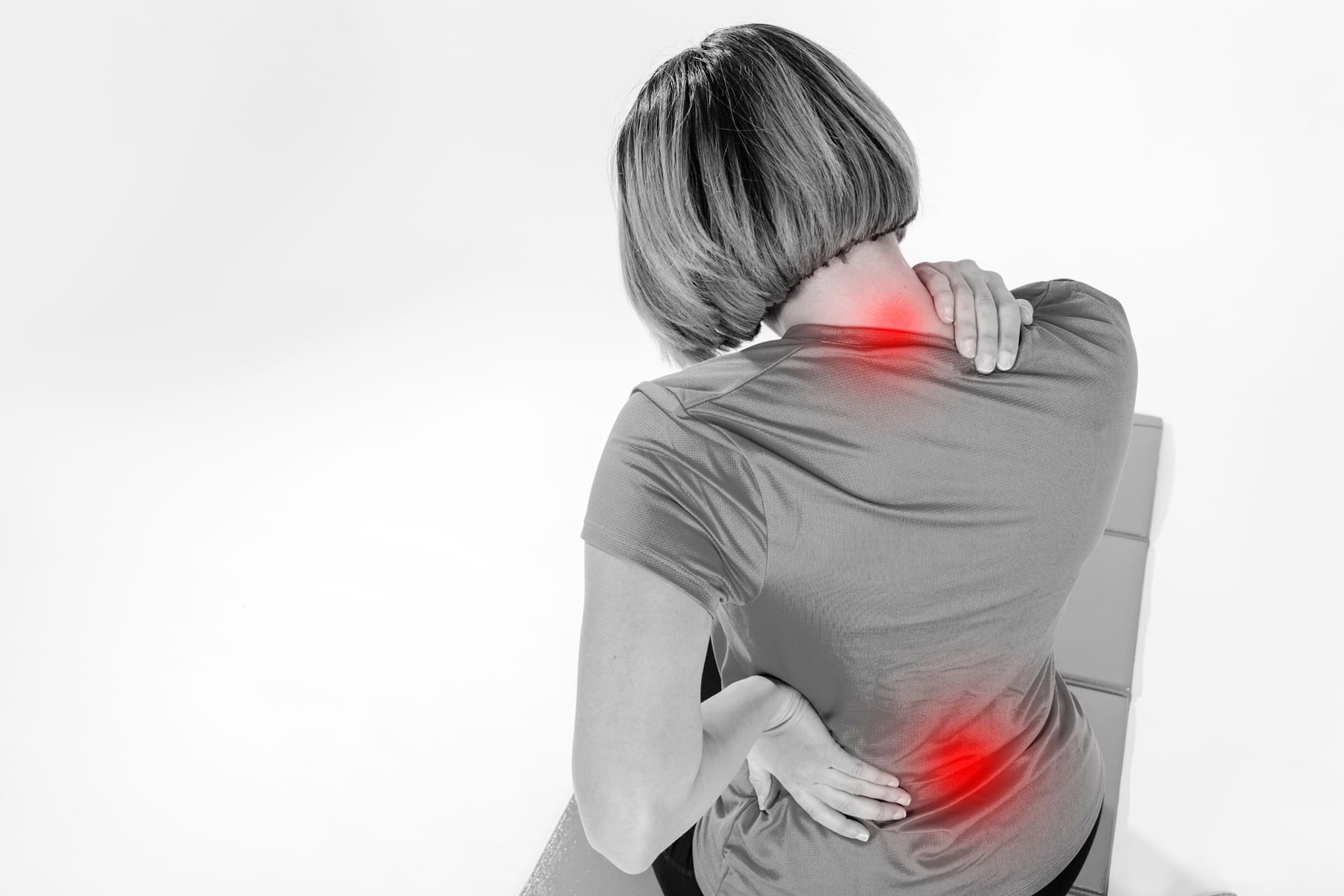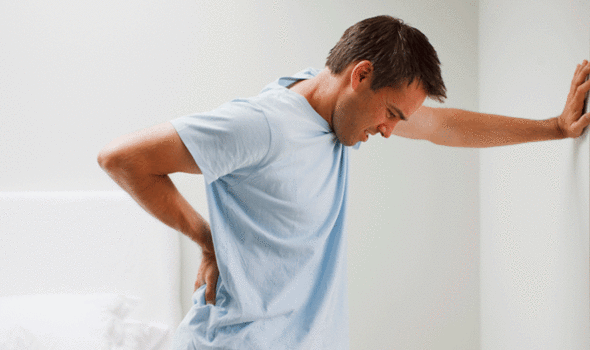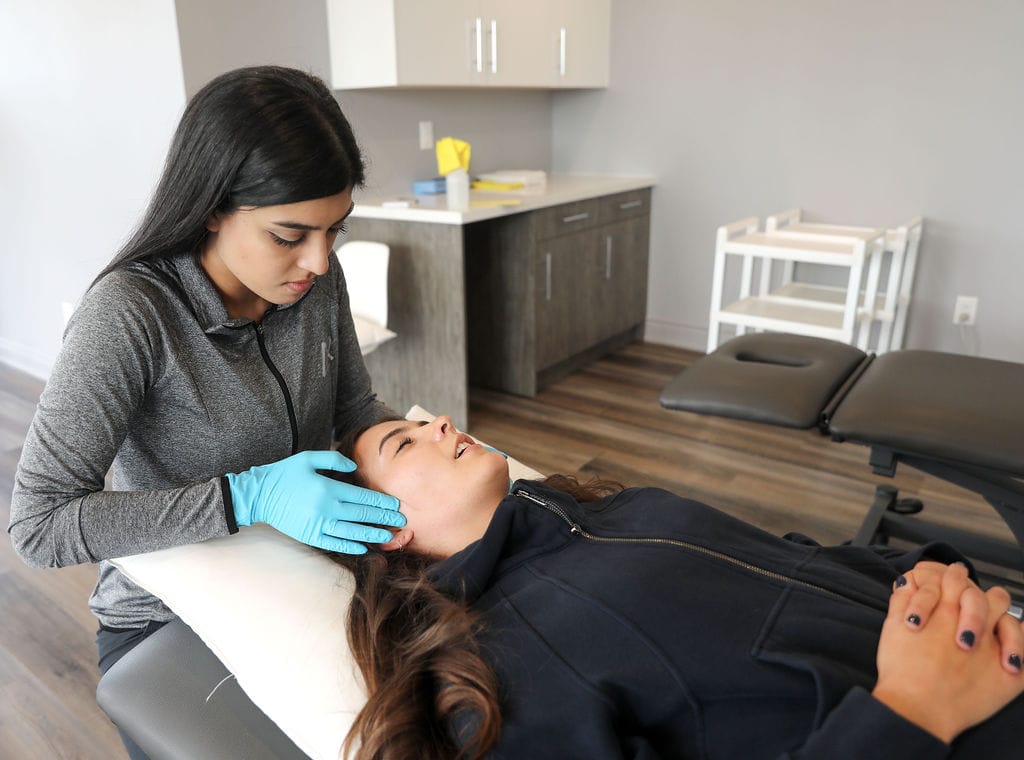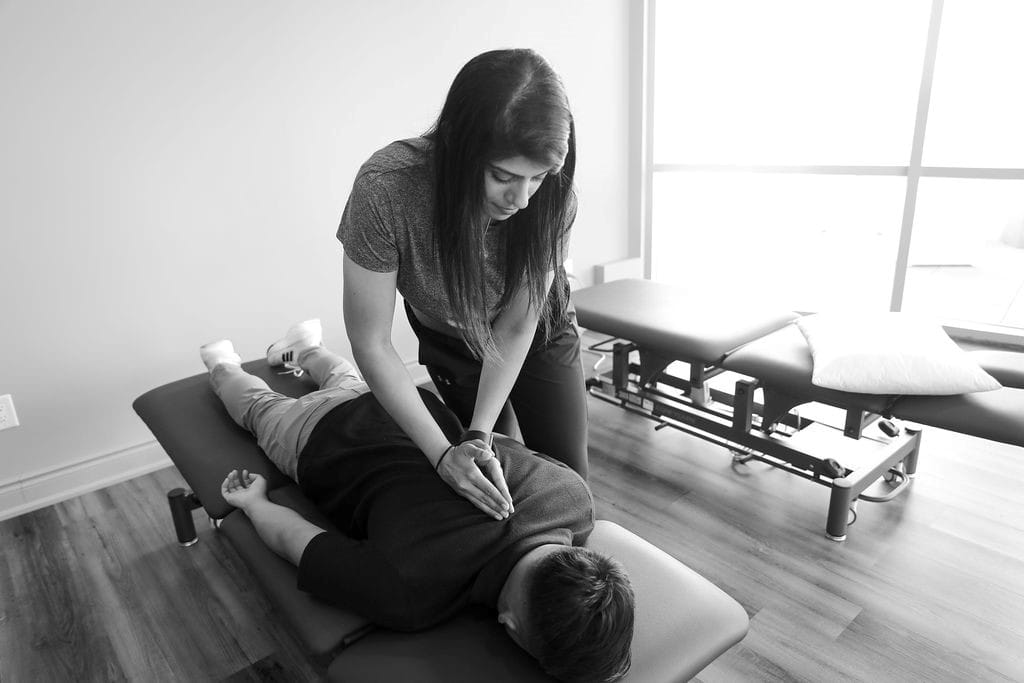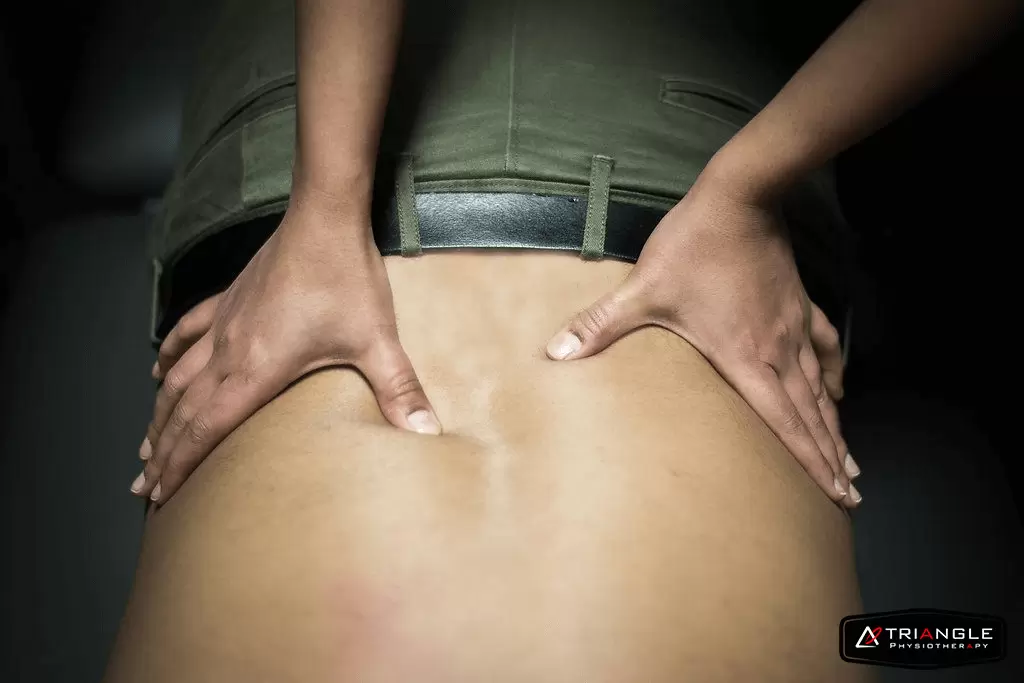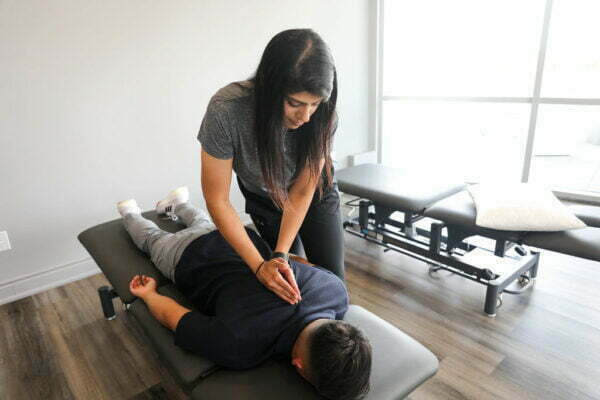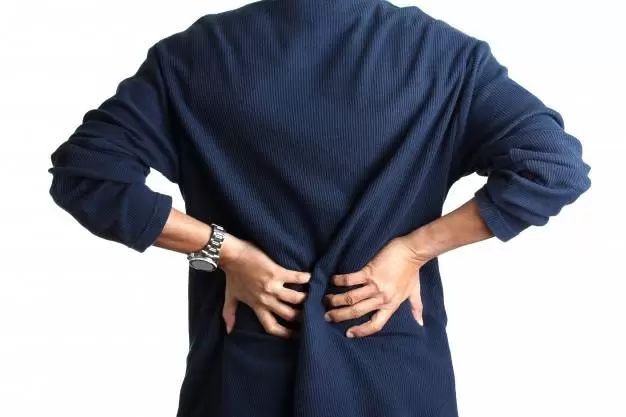Shoulder pain can vary in its cause and severity, and whether it goes away on its own depends on several factors. Here are some considerations:
- Cause of Shoulder Pain
- Acute vs. Chronic Pain
- Severity of Pain
- Age and Health Status
- Activity Level
- Professional Evaluation
- Treatment Options

What are some Common Shoulder Problems and how to treat them?
Shoulder problems can encompass a range of conditions and injuries. Here are some common shoulder problems and some general guidelines on how they are typically treated:
- Rotator Cuff Tears:
- Treatment can range from rest and physiotherapy for partial tears to surgical repair for complete tears.
- Tendinitis (Rotator Cuff Tendinitis):
- Rest, ice, anti-inflammatory medications, and physiotherapy are common initial treatments. Severe cases may require corticosteroid injections.
- Bursitis (Shoulder Bursitis):
- Similar to tendinitis, treatment includes rest, ice, anti-inflammatory drugs, and physiotherapy. In some cases, corticosteroid injections may be used.
- Frozen Shoulder (Adhesive Capsulitis):
- Physiotherapy and stretching exercises are often recommended. Severe cases may require manipulation under anesthesia or surgery.
- Shoulder Impingement:
- Rest, ice, physiotherapy, and modifications to activity are typical treatments. Injections or surgery may be necessary in severe cases.
- Labral Tears (SLAP Tears):
- Non-surgical options include rest and physiotherapy. Severe cases may require arthroscopic surgery to repair the labrum.
- Shoulder Instability (Shoulder Dislocation):
- Initial treatment includes immobilization and physiotherapy. Surgical options may be considered for recurrent dislocations.
- Arthritis (Osteoarthritis or Rheumatoid Arthritis):
- Management includes pain relief with medications, physiotherapy, and lifestyle modifications. In severe cases, joint replacement surgery may be recommended.
- Fractures (Clavicle, Humerus, or Scapula):
- Treatment depends on the type and severity of the fracture. Options include immobilization with a cast or sling, surgery, and physiotherapy.
- AC Joint Separation:
- Mild cases may require rest and physiotherapy, while severe cases may require surgery.
- Nerve Compression (Thoracic Outlet Syndrome):
- Treatment may involve physiotherapy, posture correction, and occasionally surgery to relieve compression on nerves and blood vessels.
How do I book an appointment at a Physiotherapy Clinic near me?
Click HERE to book an appointment with a physiotherapist or chiropractor at one of our eight locations.
- Physiotherapy Etobicoke – Triangle Physiotherapy Etobicoke
- Oakville Physiotherapy Clinic – Triangle Physiotherapy Oakville
- Physiotherapy North York – Triangle Physiotherapy North York
- Mississauga Physiotherapy Clinics – Triangle Physiotherapy Mississauga
- Downtown Physiotherapy Clinics – Triangle Physiotherapy King West
- Uptown Physiotherapy Clinics – Triangle Physiotherapy Lawrence Park
- Physiotherapy Clinic Downtown Toronto – Triangle Physiotherapy Queens Quay
- Physiotherapy Clinics Mississauga – Triangle Physiotherapy Erin Mills
“Shoulder pain can be persistent and may not resolve on its own without proper care. Triangle Physiotherapy offers expert services across the GTA, including Physiotherapy in Etobicoke, Oakville, North York, Toronto, Lawrence Park, Queens Quay, Erin Mills, Mississauga, and Liberty Village. Our skilled physiotherapists can help you address the root causes of your shoulder pain and guide you towards effective recovery.”
Getting the most out of your physiotherapy appointment involves effective communication, preparation, and active participation.
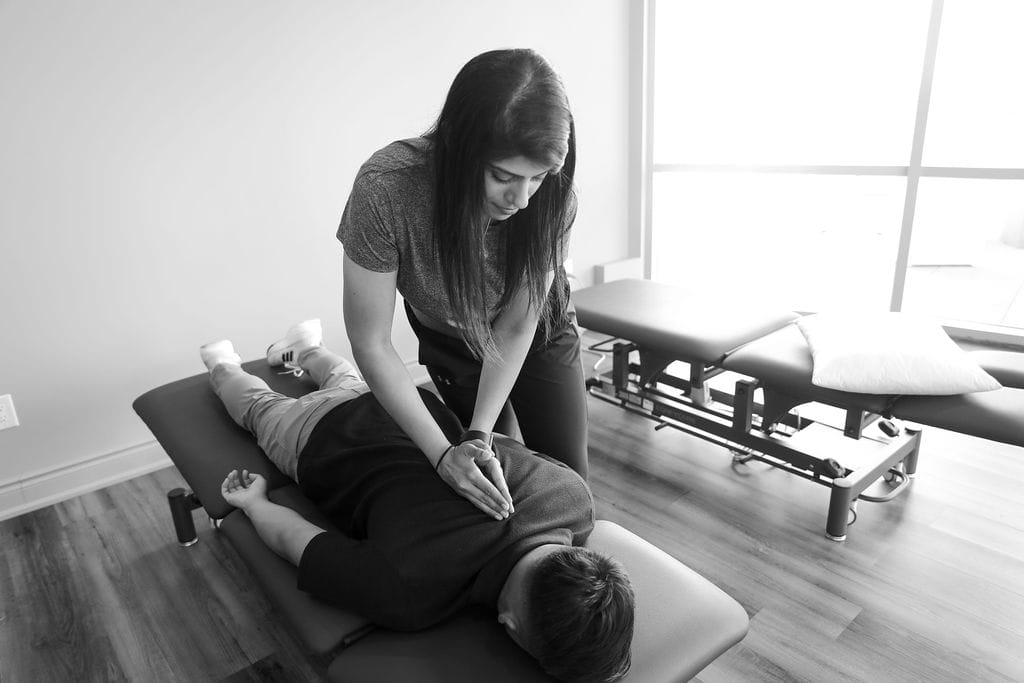
Here are some tips to help you make the most of your physiotherapy session:
- Be Prepared:
- Write down your symptoms, concerns, and questions beforehand.
- Note any changes in your condition since your last appointment.
- Bring relevant medical reports, imaging results, or a list of medications you’re taking.
- Arrive Early:
- Arriving a few minutes early will give you time to complete any necessary paperwork and relax before your session.
- Effective Communication:
- Clearly describe your symptoms, their onset, severity, and any factors that worsen or alleviate them.
- Be honest about your lifestyle, activities, and habits that could impact your condition.
- Ask questions if you don’t understand something. Your physiotherapist is there to help you.
- Set Clear Goals:
- Discuss your goals with your physiotherapist. What do you want to achieve through physiotherapy? This could be pain relief, improved mobility, or functional goals.
- Follow Instructions:
- Listen carefully to the advice and instructions provided by your physiotherapist.
- Follow the recommended exercises, stretches, or home-care routines diligently.
- Ask Questions:
- Don’t hesitate to ask questions about your condition, treatment plan, exercises, or any concerns you might have.
- Understand Your Treatment Plan:
- Make sure you understand your treatment plan, including the goals, expected outcomes, and duration of treatment.
- Take Notes:
- Jot down key points, exercises, or recommendations during the session so you can refer back to them later.
- Feedback:
- Provide feedback to your physiotherapist about your progress and any changes you’ve noticed.
- Be Patient:
- Understand that progress may take time. Don’t get discouraged if you don’t see immediate results.
- Follow Up:
- Schedule follow-up appointments as recommended by your physiotherapist to monitor your progress and make adjustments to your treatment plan.
- Hygiene and Attire:
- Wear comfortable clothing that allows easy access to the area being treated.
- Maintain good hygiene, especially if your session involves physical contact.
- Engage Actively:
- Participate actively during the session. Follow your physiotherapist’s instructions and give your best effort during exercises.
Remember, your physiotherapist is there to help you achieve your goals and improve your health and well-being. By being proactive, engaged, and open in your communication, you can maximize the benefits of your physiotherapy appointments.
How do I book an appointment at a Physiotherapy Clinic near me?
Click HERE to book an appointment with a physiotherapist or chiropractor at one of our eight locations.
- Physiotherapy Etobicoke – Triangle Physiotherapy Etobicoke
- Oakville Physiotherapy Clinic – Triangle Physiotherapy Oakville
- Physiotherapy North York – Triangle Physiotherapy North York
- Mississauga Physiotherapy Clinics – Triangle Physiotherapy Mississauga
- Downtown Physiotherapy Clinics – Triangle Physiotherapy King West
- Uptown Physiotherapy Clinics – Triangle Physiotherapy Lawrence Park
- Physiotherapy Clinic Downtown Toronto – Triangle Physiotherapy Queens Quay
- Physiotherapy Clinics Mississauga – Triangle Physiotherapy Erin Mills
“Maximizing the benefits of your physiotherapy appointment is essential for a successful recovery. Triangle Physiotherapy offers expert services across the GTA, including Physiotherapy in Etobicoke, Oakville, North York, Toronto, Lawrence Park, Queens Quay, Erin Mills, Mississauga, and Liberty Village. Our skilled physiotherapists are committed to helping you achieve your health goals with personalized care and guidance.”
A physiotherapist and chiropractor specialize in diagnosing, treating, and preventing various physical conditions and injuries. Both of these health professionals have extensive training in helping patients with various injuries and chronic health conditions.
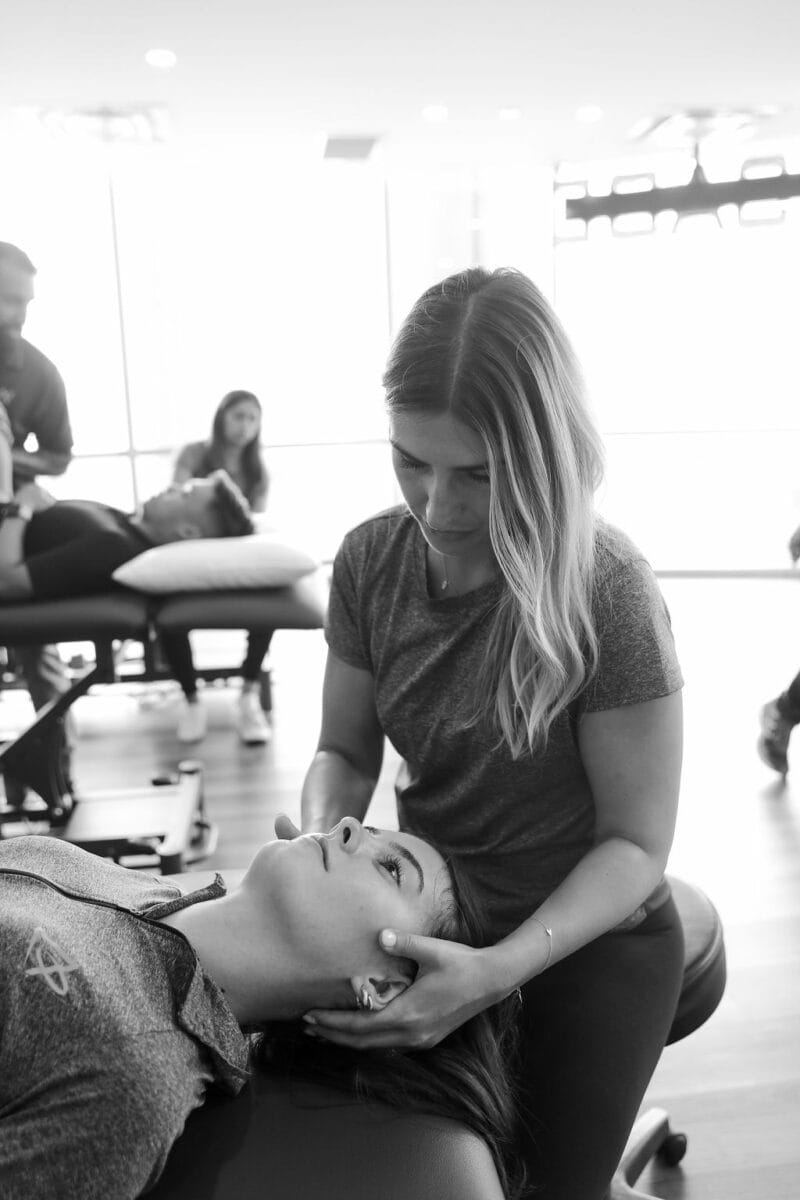
How are physiotherapy and chiropractic treatments similar?
1. Focus on Musculoskeletal System: Both physiotherapy and chiropractic treatment focus on the musculoskeletal system, which includes the bones, muscles, joints, and nerves. They seek to address issues related to these structures to alleviate pain and improve mobility.
2. Non-Invasive Approaches: Both physiotherapy and chiropractic treatment generally use non-invasive techniques to manage musculoskeletal conditions. They emphasize hands-on therapies and exercises rather than relying on medication or surgery.
3. Patient-Centered Care: Both approaches prioritize patient-centered care, tailoring treatment plans to individual needs and conditions. They consider the patient’s specific symptoms, medical history, lifestyle, and goals to design effective and personalized treatment strategies.
4. Pain Relief: Both physiotherapists and chiropractors work to alleviate pain caused by musculoskeletal issues. They use manual therapies and exercises to reduce discomfort and promote healing.
5. Holistic Approach: Both physiotherapy and chiropractic treatment take a holistic approach to healthcare. They consider not only the physical symptoms but also the patient’s overall well-being and lifestyle factors that may contribute to their condition.
6. Rehabilitation and Injury Prevention: Both physiotherapists and chiropractors play a role in injury rehabilitation. They assist patients in recovering from injuries, surgeries, or accidents, and they provide guidance on preventing future injuries through proper techniques and exercises.
7. Emphasis on Patient Education: Physiotherapists and chiropractors both emphasize patient education. They educate patients about their conditions, treatment options, and ways to maintain or improve their health through exercise, posture, and lifestyle adjustments.
8. Complementary Approaches: In some cases, physiotherapists and chiropractors work together or in conjunction with other healthcare professionals to provide comprehensive care for patients. Their complementary approaches can enhance treatment outcomes for certain conditions.
9. Evidence-Based Practice: Both physiotherapy and chiropractic treatment rely on evidence-based practices. They incorporate the latest research and clinical evidence to inform their treatment decisions, ensuring that patients receive the most effective and safe care.
10. Wellness Promotion: Beyond treating specific conditions, both physiotherapists and chiropractors promote overall wellness and health. They focus on enhancing physical function and quality of life, helping patients lead active and fulfilling lives.
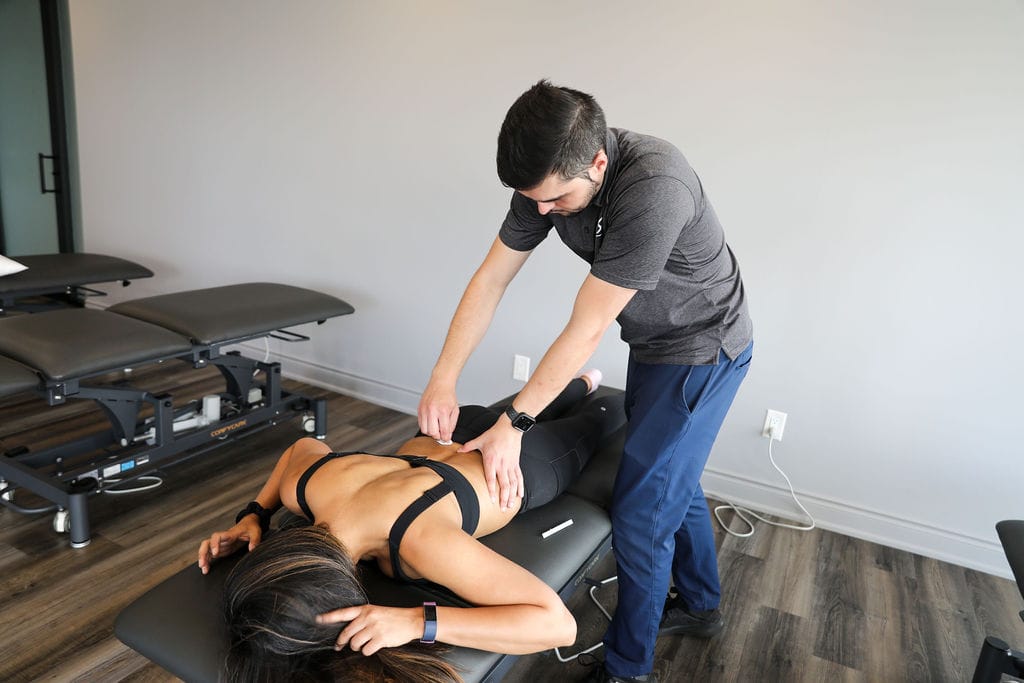
What is chiropractic?
Chiropractic is a licensed healthcare profession that emphasizes the body’s ability to heal itself. Treatment typically involves manual therapy, often including spinal manipulation which helps restore joint function.
What are the benefits of seeing a chiropractor?
Chiropractors do more than just help with back or spine issues. There are a variety of benefits of going to a chiropractor. Chiropractic care also helps improve your mental health, flexibility, muscle strength, and range of motion.
What can I expect from my chiropractic appointment?
When attending Triangle Physiotherapy for the first time, you will be asked to fill in a new patient information form prior to your initial visit. We highly recommend filling out your forms at home through our user-friendly patient portal, the link for which will be sent to you as soon as you book your session.
We will endeavor to make your first visit to our clinic a comfortable and rewarding experience.
At your initial consultation, your chiropractors will:
- Conduct a thorough examination including history taking and a physical assessment
- Give you a working diagnosis of your condition
- Education
- Treatment Plan
I am in search of a physiotherapy clinic near me that offers chiropractic services and would like to start treatment at your physiotherapy center right away. Would I be needing a doctor’s referral to see a chiropractor at clinics?
You can certainly start treatment at any of our physiotherapy clinics right away and we would not be needing a doctor’s referral unless your insurance requires one. If you do need a doctor’s referral and don’t have immediate access to a doctor, we would be happy to refer you to an online doctor service that helps many of our patients.
I would like to see a chiropractor near me to help me with my neck pain. I have heard that you offer the best chiropractic service near me. How do I book an appointment at a Triangle Physiotherapy Clinic near me?
Click HERE to book an appointment with a chiropractor at one of our eight locations.
- Physiotherapy Etobicoke – Triangle Physiotherapy Etobicoke
- Oakville Physiotherapy Clinic – Triangle Physiotherapy Oakville
- Physiotherapy North York – Triangle Physiotherapy North York
- Mississauga Physiotherapy Clinics – Triangle Physiotherapy Mississauga
- Downtown Physiotherapy Clinics – Triangle Physiotherapy King West
- Uptown Physiotherapy Clinics – Triangle Physiotherapy Lawrence Park
- Physiotherapy Clinic Downtown Toronto – Triangle Physiotherapy Queens Quay
- Physiotherapy Clinics Mississauga – Triangle Physiotherapy Erin Mills
“Understanding the difference between a physiotherapist and a chiropractor is key to choosing the right care for your needs. Triangle Physiotherapy offers expert services across the GTA, including Physiotherapy in Etobicoke, Oakville, North York, Toronto, Lawrence Park, Queens Quay, Erin Mills, Mississauga, and Liberty Village. Our experienced team is here to help you find the best approach to managing your health and achieving your wellness goals.”
Stretching can be beneficial for relieving lower back pain and improving flexibility and mobility.
What are some of the best stretches for the lower back?
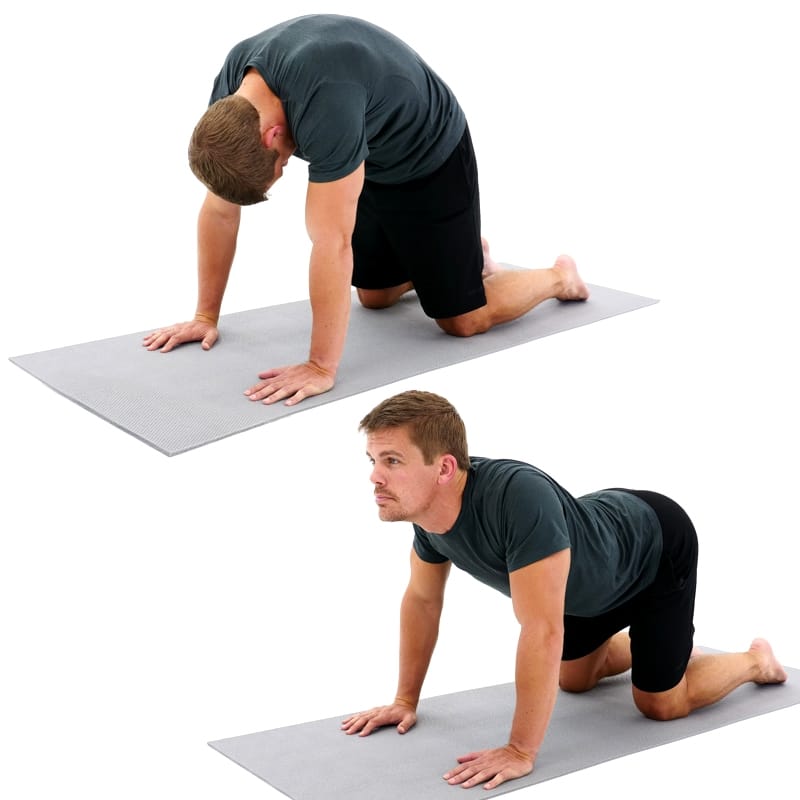
Cat-Cow is one of the best stretches for the low back which gentle flow between two poses that warms the body and brings flexibility to the spine. It stretches the back torso and neck, and softly stimulates and strengthens the abdominal organs.
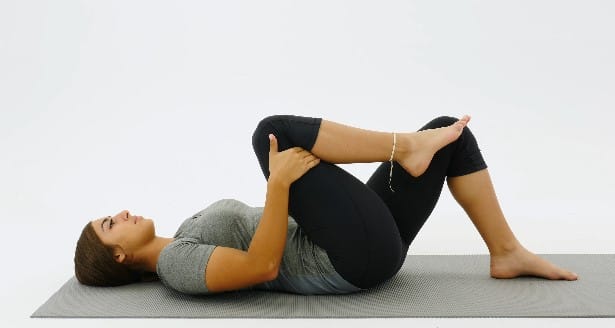
Knee-to-Chest Stretch: Lie on your back with your knees bent. Slowly bring one knee toward your chest, grasping it with your hands and gently pulling it closer. Hold for 20-30 seconds, then repeat with the other leg.
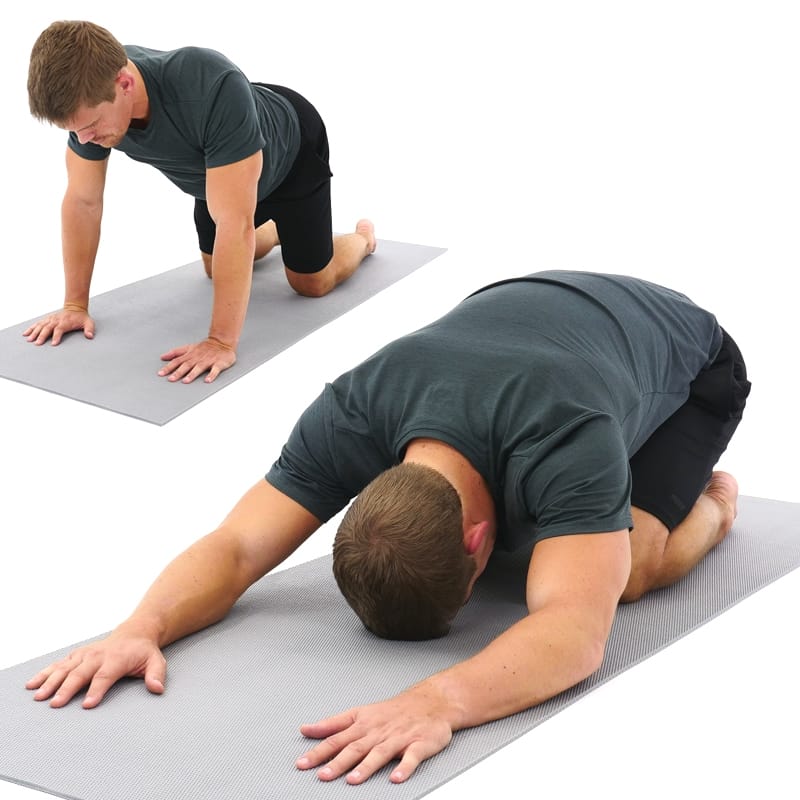
Child’s Pose is one of the best stretches for the low back and provides a gentle stretch for the back, hips, thighs, and ankles. It can help relieve back pain. Start on your hands and knees, then sit back on your heels while extending your arms forward and lowering your forehead to the ground. This stretch gently stretches the lower back.
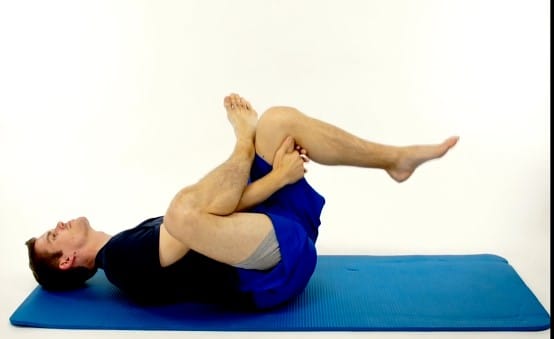
Piriformis Stretch: Lie on your back with your knees bent. Cross one ankle over the opposite knee, then gently pull the uncrossed leg towards your chest until you feel a stretch in your buttocks. Hold for 20-30 seconds and switch sides.

Figure 4 Stretch: Lie on the ground or treatment table with your legs extended in front of you. Cross one ankle over the opposite knee, then gently lean forward, keeping your back straight, until you feel a stretch in your buttocks and outer hip. Hold for 20-30 seconds and switch sides.
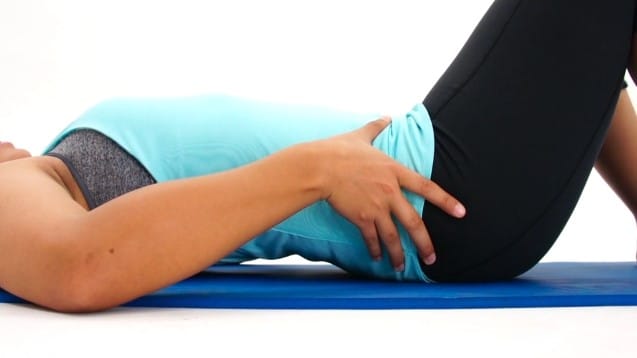
Pelvic Tilt: Lie on your back with your knees bent and feet flat on the ground. Gently flatten your lower back against the floor by tilting your pelvis upward. Hold for a few seconds, then release. Repeat 10-15 times.
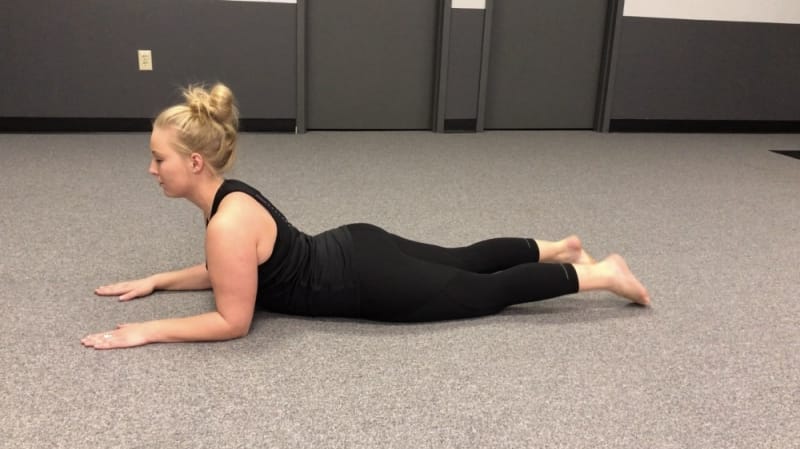
Sphinx Pose: Lie on your stomach and prop yourself up on your forearms, keeping your elbows directly beneath your shoulders. Press your forearms into the ground to lift your upper body, arching your back gently. Hold for 20-30 seconds.
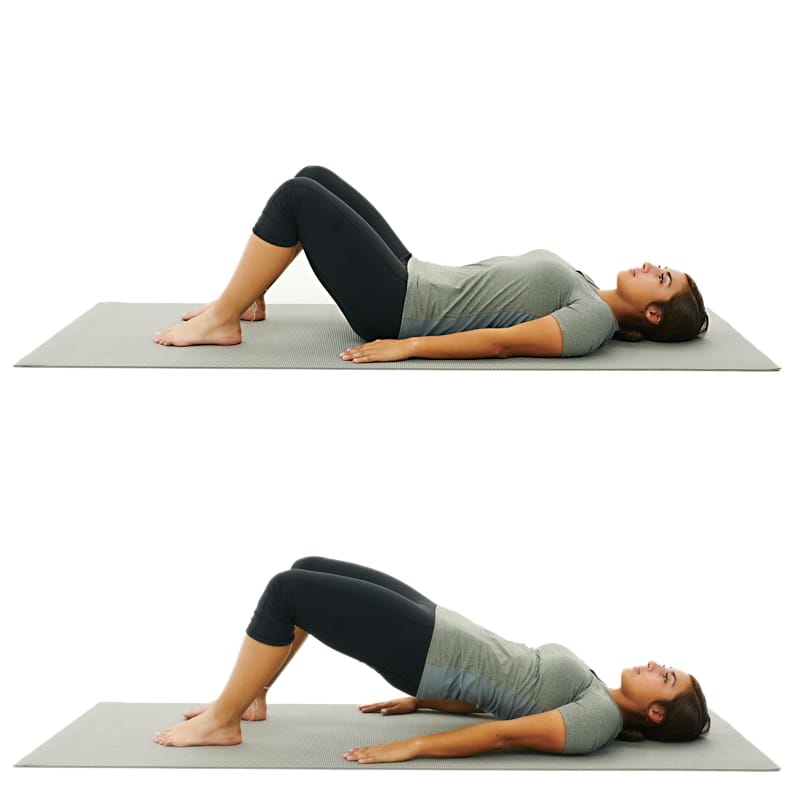
Lie on your back with your knees bent, feet flat on the floor. Lift your hips off the ground, forming a straight line from knees to shoulders.
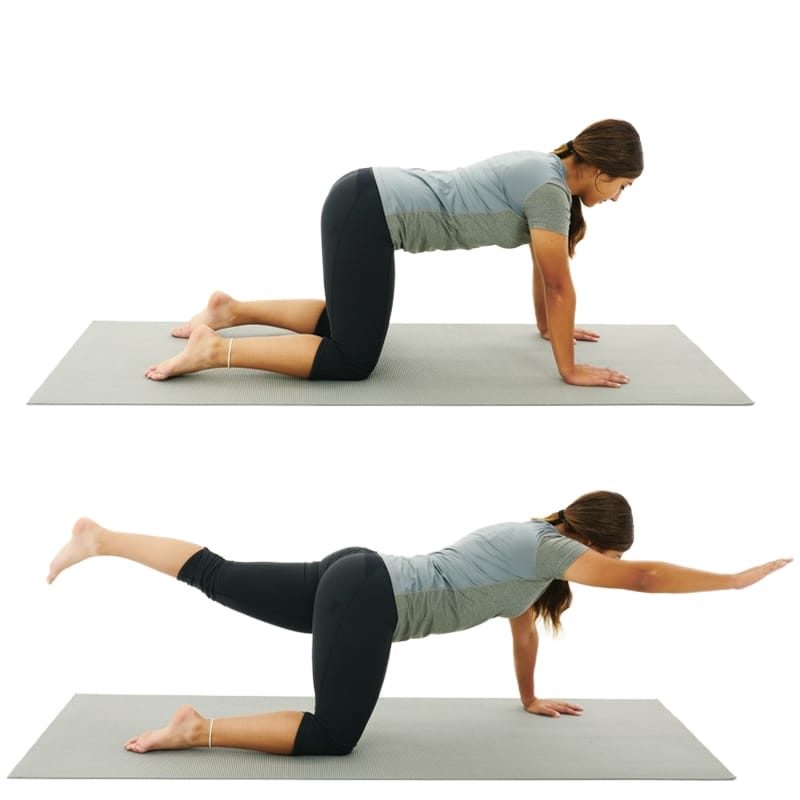
Bird Dog: While in a crawling position, tighten/brace at your abdominal muscles and then slowly lift a leg and opposite arm upwards. Your hip will move into a hip extension on the way up. Lower leg and arm down and then repeat with the opposite side.
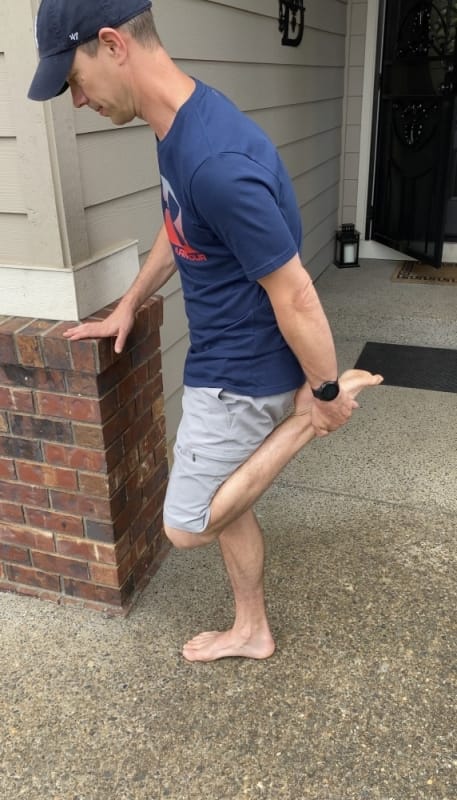
Standing Quadriceps Stretch: Stand tall and hold onto a stable object for balance. Bend one knee, bringing your heel toward your buttocks, then grasp your foot with your hand. Hold for 20-30 seconds and switch legs.
Should I stretch my lower back if it hurts?
Doing regular stretching exercises can help with lower back pain by maintaining your posture, strengthening your back and abdominal muscles, and improving flexibility.
What is the best position to sit in with lower back pain?
The best position to sit in with lower back pain is with a back support such as a rolled-up towel or lumbar roll, at the curve of your back. Keep your hips and knees at a right angle. Use a foot stool if necessary. Your legs must not be crossed and your feet should lie flat on the floor. It is also advisable to stretch and move around as much as possible.
Click HERE to book an appointment with a physiotherapist at one of our eight locations.
- Physiotherapy Etobicoke – Triangle Physiotherapy Etobicoke
- Oakville Physiotherapy Clinic – Triangle Physiotherapy Oakville
- Physiotherapy North York – Triangle Physiotherapy North York
- Mississauga Physiotherapy Clinics – Triangle Physiotherapy Mississauga
- Downtown Physiotherapy Clinics – Triangle Physiotherapy King West
- Uptown Physiotherapy Clinics – Triangle Physiotherapy Lawrence Park
- Physiotherapy Clinic Downtown Toronto – Triangle Physiotherapy Queens Quay
- Physiotherapy Clinics Mississauga – Triangle Physiotherapy Erin Mills
“Stretching is a key component in managing lower back pain effectively. Triangle Physiotherapy offers expert services across the GTA, including Physiotherapy in Etobicoke, Oakville, North York, Toronto, Lawrence Park, Queens Quay, Erin Mills, Mississauga, and Liberty Village. Our experienced physiotherapists can help you develop a personalized stretching routine to alleviate pain and improve your mobility.”
How do I find the best chiropractor near me?
When choosing the best chiropractor for your needs, it’s important to consider several factors. Here are some steps you can take to make an informed decision:
- Ask for recommendations
- Check credentials and qualifications
- Research online: Read online reviews and check their website
- Consider their approach and techniques
- Schedule a consultation
Remember, choosing a chiropractor is a personal decision, and what works for someone else may not work for you. Take your time, gather information, and make an informed choice that aligns with your specific needs and preferences.
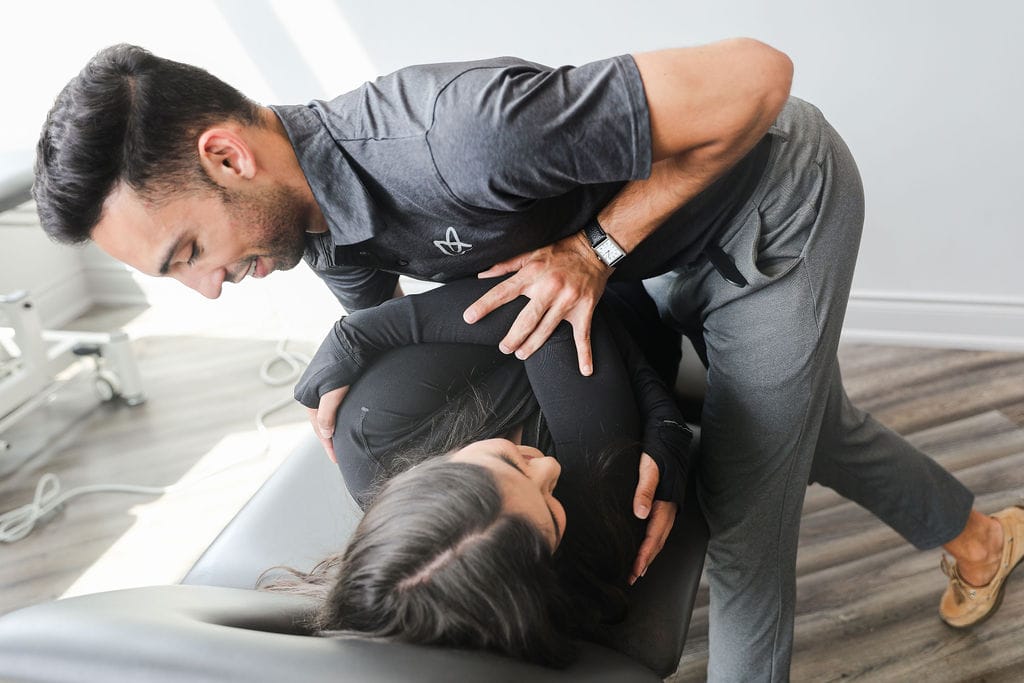
What can I expect after my first visit with a chiropractor at Triangle Physiotherapy?
You can expect to start feeling and moving better after your first chiropractic treatment! Following your initial session and subsequent treatments, temporary soreness is expected as your body adapts and responds to hands-on care.
During your treatment sessions, your chiropractor will deliver evidence-based, patient-centered care to help relieve your symptoms and restore normal function. Treatments may include adjustments of the spine and/or extremities, mobilizations, soft tissue therapy, modalities & exercise prescription. Your chiropractor may also provide expert advice to help you prevent pain and injury from recurring. Through periodic re-evaluations, your chiropractor will update and tailor your treatment plan to meet your health needs.
If you have any specific questions regarding your treatment plan, please discuss this further with your Chiropractor.
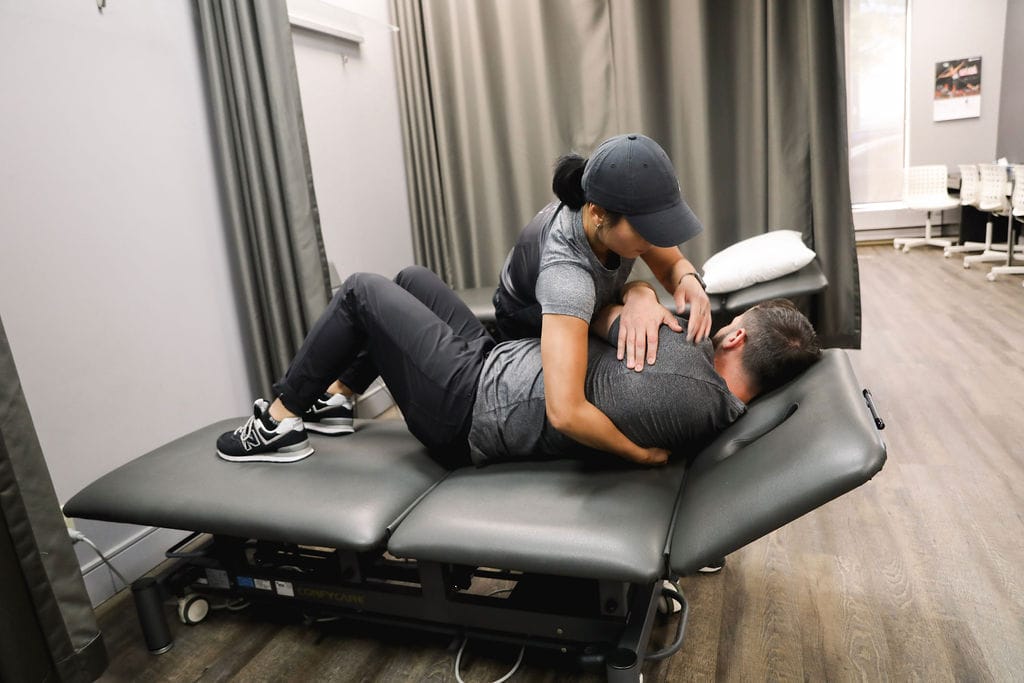
What Conditions Do Chiropractors Commonly Treat?

Remember…Even if you do not have painful symptoms, chiropractic care can help you maintain a healthy spine and optimal joint function.
What Benefits Can I Expect Following My Treatment Sessions?
Here are some ways chiropractic care can help you feel better, move better and live better:
- Correct
- Gait and foot problems
- Posture and ergonomics
- Achieve
- Optimal movement in your neck, shoulders, back and torso
- Increased flexibility
- Relieve
- Joint pain, muscle pain and headaches
- Pregnancy-related back pain
- Enhance
- Your athletic performance
- Your overall well-being
Our More Locations
Physiotherapy Etobicoke | Physiotherapy Oakville | Physiotherapy North York | Physiotherapy Toronto | Physiotherapy Lawrence Park | Physiotherapy Mississauga | Physiotherapy Queens Quay | Physiotherapy Mississauga Erin Mills | Physiotherapy Liberty Village
Click HERE to book an appointment with a physiotherapist at one of our eight locations.
- Chiropractic Etobicoke – Triangle Physiotherapy Etobicoke
- Oakville Chiropractic Clinic – Triangle Physiotherapy Oakville
- Chiropractic North York – Triangle Physiotherapy North York
- Mississauga Chiropractic Clinics – Triangle Physiotherapy Mississauga
- Downtown Chiropractic Clinics – Triangle Physiotherapy King West
- Chiropractic Yonge and Eglinton – Triangle Physiotherapy Lawrence Park
- Chiropractic Clinic Downtown Toronto – Triangle Physiotherapy Queens Quay
- Best Chiropractor Mississauga – Triangle Physiotherapy Erin Mills
Choosing the best chiropractor involves evaluating their experience, techniques, and patient care approach. If you’re also in need of professional physiotherapy services to support your chiropractic care, there are reputable clinics in physiotherapy Etobicoke, Oakville, North York, Toronto, Lawrence Park, Queens Quay, Erin Mills, Mississauga, and Liberty Village. These locations offer expert care and personalized treatment plans to help you achieve your health and wellness goals.
Things you need to know about active release technique (ART)
What is Active Release Therapy and how does ART help?
Active Release Techniques (ART) is a patented soft tissue technique that treats problems with muscles, tendons, fascia, ligaments, and nerves by using isolated pressure and movements on soft tissues to release adhesions. It is very effective in improving pain and increasing blood flow and healing soft tissues.
How does the active release technique work?
During an ART session, the therapists identify, isolate and target the affected areas by using their hands to locate an area with adhesion. They then apply traction to that specific area while the patient moves their body, in order to pull the muscle underneath. This technique helps break up the scar tissue which helps the area restore proper blood flow.
Active Release Therapy works by breaking up adhesions, which are a microscopic form of scar tissue. This can cause pain, weakness, reduced flexibility, and nerve damage.
What are the benefits of ART?
The active release technique is very beneficial for neck, lower back, shoulder, and knee pain.
List Of Benefits Of Art (Active Release Technique):
- Improve flexibility
- Reduces Pain
- Promotes faster recovery
- Enhances athletic performance
- Improves circulation
What injuries can you treat with Active Release Technique?
- Sciatica
- Ankle sprains
- Iliotibial Band Syndrome
- Hamstring strain
- Carpal Tunnel Syndrome
- Cubital Tunnel Syndrome
- TMJ Disorders
- Plantar fasciitis
- Neck and Low back pain
- Nerve Entrapment
- Radial Tunnel Syndrome.
- Repetitive strain injuries
- Shoulder impingement
- Medial and Lateral Epicondylitis
How Does ART Help?
The active Release Technique helps restore the function of soft tissue which helps prevent injuries and promotes faster recovery. Active Release Therapy helps break up adhesions which then aid in restoring normal tissue motion and function.
How effective is ART and Does the Active Release Technique Really Work?
Numerous studies show that ART is a highly effective soft tissue treatment. In fact, it has been extremely popular with athletes, especially in North America helps them train better and be injury free.
How Long Does Active Release Technique Take To Work?
The time it takes for Art to work varies depending on how long the individual has had the injury and other factors. Our chiropractor will create a treatment plan for you based on the assessment findings.
How To Do Active Release Technique
During Active Release Therapy (ART), a muscle is shortened and the therapist applies tension to the muscle while the patient moves the area to actively lengthen the muscle. This may cause some pain but this is normal because this technique works by increasing the nervous system’s tolerance to the stretch to a tight muscle.
Is Active Release Technique Covered By Insurance?
Active release therapy at our clinics is done by our registered chiropractors so it will cover your sessions if your insurance plan covers chiropractic care.
History of Active Release Technique
ART has been developed, refined, and patented by P. Michael Leahy, DC, CCSP. He developed this technique because he noticed that his patient’s symptoms seemed to be related to the changes in the soft tissue which he could palpate. This technique method focuses on relieving tension in the tissue caused by repetitive movement.
This technique revolves completely around the patient’s symptoms and aims to treat soft tissue mobility issues with tendons, ligaments, muscles, nerves, and fascia.
Dr. Leahy consistently helped heal 90% of his patients’ issues. In 1985, he first documented his work under the title of Myofascial Release, but later on, he patented it under the name Active Release Techniques. He is now teaching healthcare providers all over the world to use ART.
How Much Does Active Release Technique Cost?
ART is done by our chiropractors. The fees for chiropractic services are:
Initial session which is an hour long and includes assessment and assessment for $125.
A 30 minute follow up treatment session is for $95.
How Art Is Different Considered To Many Other Soft Tissue Techniques?
The main difference between Active Release Therapy and any other soft tissue techniques is that ART incorporates active movement into treatment. While the therapist presses on the affected area, the patient actively moves the affected structure.
Active Release Technique Vs Myofascial Release
- Is Active Release Technique the same As Myofascial Release?
Active Release Therapy is an advanced form of Myofascial release and its main goal is to break up adhesions which helps with the reduction of pain and increases the range of motion. It also helps reduce inflammation by improving circulation.
The main goal of Myofascial Release Therapy is to loosen the fascia and release restrictions to restore the range of motion and decrease pain.
In Myofascial Release Therapy, the therapist applies gentle but firm pressure to areas known as trigger point areas to release the tension.
Book your appointment for an ART session here.
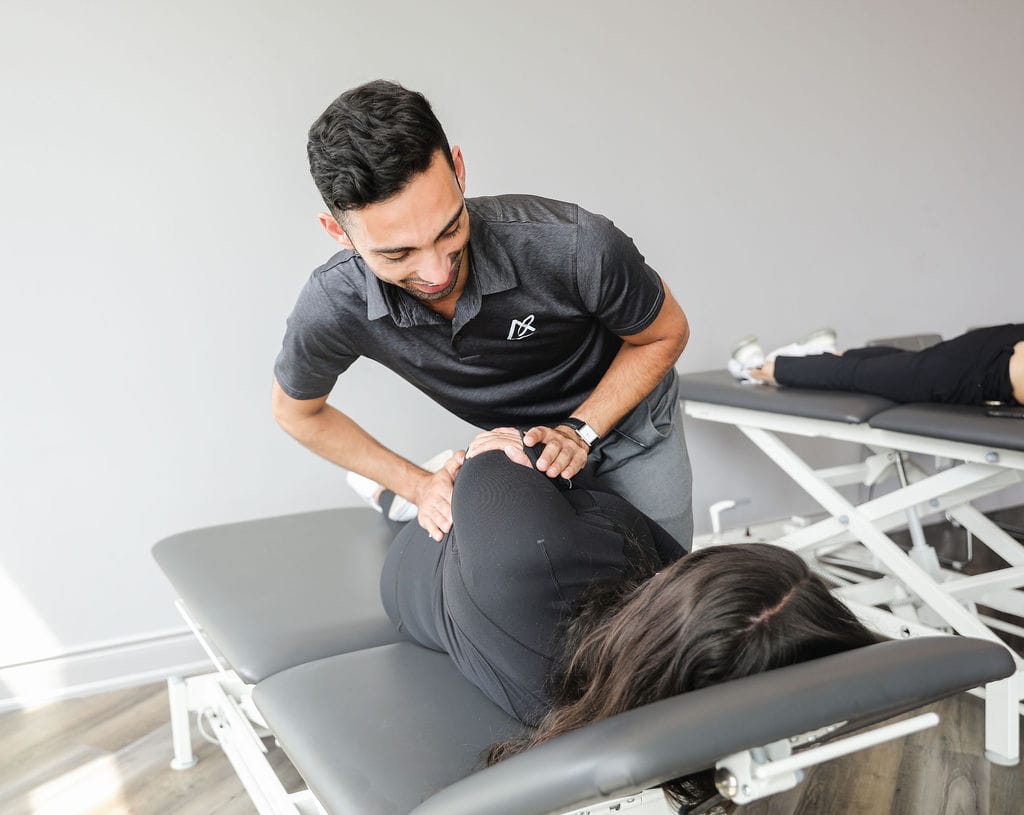
| Definition/Layman’s terms for the condition | Sacroiliac joint dysfunction is a term used to describe the pain derived from the joint. It can be caused in issues with movement and alignment. It usually presents as low back pain. |
| Cause/MOI | SI joint dysfunction can be present during pregnancy when there are many changes to the body (physically, hormonally, etc). It can also be present after trauma to the area by landing on your back or landing with a straight leg causing forces to travel up the leg. |
| Common symptoms | Pain is usually localized over the buttock area where the SIJ is located. It may be a sharp or shooting pain that can refer down the back of the leg, but usually not past the knee. Most people will complain of pain when sitting down, climbing stairs |
| How is it diagnosed clinically? Diagnostically | Clinical diagnosis is based on a combination of subjective history and clinical cluster of objective tests. Subjective history may include pregnancy, direct trauma to the area, landing on a straight leg, pain localized to the buttock area or referring down the leg but not past the knee. Objective tests include a series of maneuvers that may provoke the pain or may show the clinician changes in motor control around the SIJ. |
| Treatment options? | Treatment options usually are conservative in nature and thus physiotherapy is a mainstay in addressing SIJ dysfunction. Pain medications, corticosteroids, taping and braces may also be implemented to help with daily functioning. |
| How physiotherapy can help? | Physiotherapy can help by reducing pain and inflammation, strengthening your core and mobilizing your SIJ. |
| Typical physiotherapy treatment approach-manual therapy, modalities, exercise, etc | Physiotherapy treatment may consist of manual therapy, exercises, education, and modalities. Manual therapy may consist of low back mobilisations, SIJ mobilisations and manipulations to help with pain relief.Exercises may consist of core strengthening and lower extremity strengthening, all in an effort to help provide stability to the area and increase pain free mobility. Contact us to book an appointment for a physiotherapy assessment. |
| Other treatment options | Other treatment options include braces, taping, corticosteroids. |
| Prognosis | SIJ dysfunction has a good prognosis and pregnancy-related SIJ dysfunction will usually resolves within 12 months post-partum. |
| Consequences of not getting it treated/long term effects | Ongoing pain, trouble with sitting, walking/running, trouble with daily activities that involve your lower extremities. |
| Braces that can help | Pelvic belt, SI joint belt. We offer the Sacroloc. |
Click HERE to book an appointment with a physiotherapist or chiropractor at one of our eight locations.
- Physiotherapy Etobicoke – Triangle Physiotherapy Etobicoke
- Oakville Physiotherapy Clinic – Triangle Physiotherapy Oakville
- Physiotherapy North York – Triangle Physiotherapy North York
- Mississauga Physiotherapy Clinics – Triangle Physiotherapy Mississauga
- Downtown Physiotherapy Clinics – Triangle Physiotherapy King West
- Uptown Physiotherapy Clinics – Triangle Physiotherapy Lawrence Park
- Physiotherapy Clinic Downtown Toronto – Triangle Physiotherapy Queens Quay
- Physiotherapy Clinics Mississauga – Triangle Physiotherapy Erin Mills
“Effectively managing SI joint dysfunction requires targeted physiotherapy and expert care. Triangle Physiotherapy offers specialized services across the GTA, including Physiotherapy in Etobicoke, Oakville, North York, Toronto, Lawrence Park, Queens Quay, Erin Mills, Mississauga, and Liberty Village. Our experienced physiotherapists can help you alleviate pain and restore proper function through personalized treatment plans.”
What is Plantar Fasciitis?
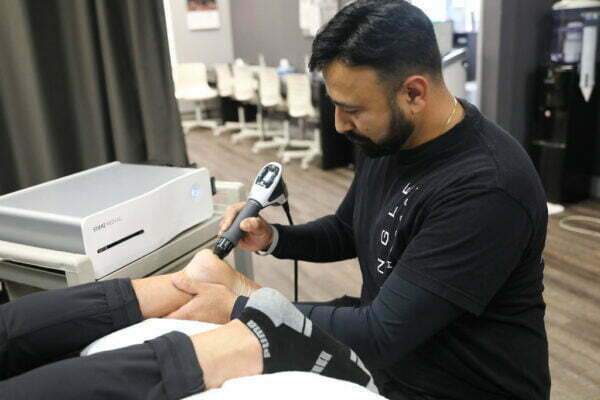
Plantar Fasciitis is a type of foot pain resulting from inflammation of a band of connective tissue located on the bottom side of the foot known as the Plantar Fascia. This band of connective tissue runs from the heel of the foot, all the way to the base of each toe, and it functions to support the arch of the foot, especially during weight-bearing.
The pain associated with Plantar Fasciitis is located on the bottom of the foot, with it often manifesting around the heel and along the inside of the foot. It is common for this pain to be at its worst first thing in the morning, and it is usually accompanied by other symptoms, such as stiffness, weakness, swelling and decreased proprioception.
What is the Plantar Fascia?
The plantar fascia is a flat band of tissue that connects your heel bone (Calcaneus) to the base of the toes (Metatarsophalangeal joints). This ligament assists in supporting the arch of your foot.
What causes Plantar Foot Pain?
People experience this when they have strained the connective tissue from repetitive overloading to the area. Repetitive overloading causes little tears to occur, and over time this produces inflammation and other associated symptoms, as described above.
Plantar Fasciitis is more common in people who can relate to the following:
- Have flat feet or high arches
- Have tight calf muscles
- Wear improper footwear
- Engage in repetitive physical activity (overtraining)
- Suddenly changed activity levels (increased frequency, duration or intensity)
- Suddenly changed activity or training environment
- Work in an environment that requires prolonged standing
Plantar Fasciitis is one of the most common reasons people experience foot pain and seek Physiotherapy treatment to solve it.
How can a physiotherapist at Triangle Physiotherapy help with plantar foot pain?
A Physiotherapist at Triangle Physiotherapy will do a thorough assessment of the fot to ensure a proper diagnosis is obtained. This will include getting a detailed history, observing the area and how you function, and running through a series of specific tests. From there, an individualized treatment plan will be made for you to help you achieve your goals and assist you on your road to recovery.
If you think you might have Plantar Foot Pain, contact us to book an appointment with one of our Physiotherapists today!
“Managing plantar foot pain effectively requires targeted physiotherapy. Triangle Physiotherapy offers expert services across the GTA, including Physiotherapy in Etobicoke, Oakville, North York, Toronto, Lawrence Park, Queens Quay, Erin Mills, Mississauga, and Liberty Village. Our experienced physiotherapists provide personalized care to help alleviate pain and improve foot function, ensuring you can get back on your feet with confidence.”
Chiropractors advise that before the weather gets better and we start thinking about getting more active, it’s a good idea to keep some health tips in mind. Anything from a traumatic sports injury to even a minor fall can cause a big issue in our backs. If that happens, it is important to be aware of natural, non-medical remedies that may help. Chiropractors, using spinal adjustments and other forms of hands-on manual treatment, can help you heal without medicine. We have got your back at Triangle Physiotherapy with Chiropractors working out of our King Street West, Oakville, North York and Lawrence Park clinics.
Who is a Chiropractor?
A chiropractor is a trained healthcare professional who specializes in detecting and treating neuromuscular disorders through manual adjustments. They are skilled in hands-on healthcare to help you with postural restoration, spinal alignment, nervous system function and maintenance of health. Chiropractic care is considered an “alternative treatment” approach as it does not involve taking heavy pain-killing drugs or undergoing surgery.
Also read, Best Physiotherapy Rehab Clinic in Etobicoke
What does a Chiropractor Treat?
Nobody takes better care of your spine than a chiropractor. For many conditions, such as lower backache, neck pain, sciatica, and headache, going to a chiropractor is frequently recommended as the primary method of treatment. However, that’s not all they treat. They also treat all other neuromusculoskeletal conditions in the body, ranging from frozen shoulder to a sprained ankle through a manual, rehabilitation-based approach.
Also read, Best Physiotherapy Treatment Clinic in Oakville
Here is some general advice from our Chiropractors:
- Increase your core strength: Build your core muscles by exercising daily and by eating healthy. It will increase your stamina and help you catch yourself to avoid a fall while you travel/hike.
- Stretch regularly: Keep your muscles flexible, it will help you to prevent any injury.
- Take regular breaks at work: Especially when you have a traditional 9-5 desk job, sitting constantly without any movement can get your back and neck in trouble. Get up every 30 minutes and take a 2 minute walk.
- Regularly visit a Chiropractor: Just like you would with your family Physician, inform your Chiropractor about any injury you might have sustained, regardless of how “minor” you think it to be. Even a small wreck can disturb the overall functioning of your body and can lead to long-term unwanted compensations.
- Change your mattress if you always wake up with a back pain: Do you wake up sore or with a backache? It’s time to change your bed mattress. If your mattress is older than 10 years then it might be losing its ability to stabilize your back while you sleep.
Our committed Chiropractors are based out of our Etobicoke, Mississauga, Lawrence Park, King Street West, North York, and Oakville clinics, all very accessible within Toronto and Oakville. Book an appointment today to begin your journey toward a healthier lifestyle!
Click HERE to book an appointment with a chiropractor at one of our eight locations.
- Chiropractic Etobicoke – Triangle Physiotherapy Etobicoke
- Oakville Chiropractic Clinic – Triangle Physiotherapy Oakville
- Chiropractor in North York – Triangle Physiotherapy North York
- Mississauga Chiropractic Clinics – Triangle Physiotherapy Mississauga
- Downtown Chiropractic Clinics – Triangle Physiotherapy King West
- Chiropractor Yonge and Eglinton – Triangle Physiotherapy Lawrence Park
- Chiropractic Clinic Downtown Toronto – Triangle Physiotherapy Queens Quay
- Chiropractic Clinics Mississauga – Triangle Physiotherapy Erin Mills
Chiropractors play a crucial role in pain management and improving musculoskeletal health, often working alongside physiotherapists to provide comprehensive care. If you are seeking professional physiotherapy services to complement your chiropractic treatment, consider visiting clinics in physiotherapy Etobicoke, Oakville, North York, Toronto, Lawrence Park, Queens Quay, Erin Mills, Mississauga, and Liberty Village. These clinics offer expert care and personalized treatment plans to help you achieve optimal health.
Overview:
The term “Chiropractic” combines the Greek words cheir (hand) and praxis (practice) to describe a treatment that is administered by hand. It’s an alternative, non-invasive approach that focuses on the treatment of mechanical disorders of the muscles, joints, bones and nerves of the body. The goal of Chiropractic care is to tie all the above together in a functional way. The clinician that treats these ailments is known as a Chiropractor. They are skilled in hands-on healthcare, specializing in manual adjustments. Chiropractic treatment often makes use of spinal manipulation techniques to treat headaches, tiredness, or discomfort in other parts of the body.
Also read, Physiotherapy Clinic in Mississauga
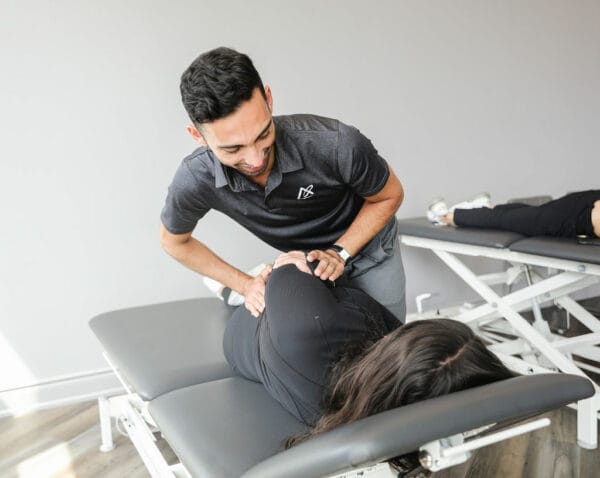
Treatment:
During the initial visits, Chiropractors usually take a health history and perform a physical examination, with a special emphasis on the spine. This may also include joint mobilizations, muscle release therapy, therapeutic exercise, nutritional counseling, and recommendations for injury prevention strategies and lifestyle changes to help you achieve your optimal well-being.
Chiropractors may combine the use of spinal adjustments and other manual therapies with several other treatments and approaches such as:
- Heat and ice
- Electrical stimulation
- Relaxation techniques
- Rehabilitative and general exercise
- Counseling about diet, weight loss, and other lifestyle factors
- Dietary supplements.
Also read, Physiotherapy Treatment in Etobicoke
How to be safe:
No part of your body escapes the dominance of your nervous system. Even the slightest malfunction of your spine may alter the regular transmission of nerve impulses, preventing that portion of your body from responding optimally. Below are some strategies to help you get the most benefit out of your Chiropractic treatment:
- Ask about the chiropractor’s education and licensure.
- Mention any medical conditions that you have, and ask whether the chiropractor has specialized training or experience in the condition for which you are seeking care.
- Tell the chiropractor about any medications and dietary supplements that you take.
- Give your Chiropractor a clear picture of the other approaches you use to manage your health conditions.
What you can expect from us?
Slight misalignments can cause poor health or function, even in areas far removed from the spine and spinal cord. Misalignments can also reduce the ability of your body to adapt to its ever-changing environment. At Triangle, we heal the pain with ‘CARE’
- Correct
- Achieve
- Relieve
- Enhance
Our Chiropractors use spinal adjustments and other techniques to help correct problems and misalignments that you might have and can help restore your nervous system to optimal function, helping your body to heal naturally.
Click HERE to book an appointment with a chiropractor at one of our eight locations.
- Chiropractor Etobicoke – Triangle Physiotherapy Etobicoke
- Oakville Chiropractic Clinic – Triangle Physiotherapy Oakville
- Chiropractic North York – Triangle Physiotherapy North York
- Mississauga Chiropractic Clinics – Triangle Physiotherapy Mississauga
- Downtown Chiropractic Clinics – Triangle Physiotherapy King West
- Chiropractic Clinics Toronto – Triangle Physiotherapy Lawrence Park
- Chiropractic Clinic Downtown Toronto – Triangle Physiotherapy Queens Quay
- Chiropractic Clinics Mississauga – Triangle Physiotherapy Erin Mills
Chiropractic care is an effective approach for managing back pain, improving spinal health, and enhancing overall mobility. For those looking to complement chiropractic care with professional physiotherapy services, there are clinics in physiotherapy Etobicoke, Oakville, North York, Toronto, Lawrence Park, Queens Quay, Erin Mills, Mississauga, and Liberty Village. These locations offer expert care and customized treatment plans to help you achieve optimal health and well-being.


